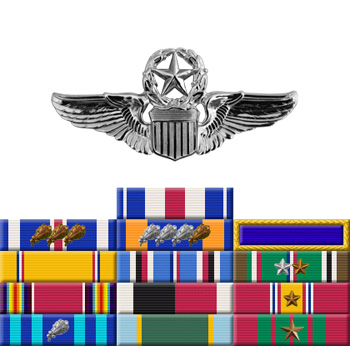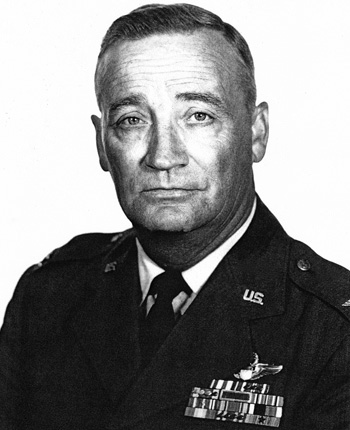
|
Willie O. Jackson, Jr. |
 |
|||
| Rank, Service | ||||
Colonel O-6, U.S. Air Force |
||||
| Veteran of: | ||||
|
||||
| Tribute: | ||||
Willie Jackson was born on August 15, 1918, in Converse, Louisiana. He enlisted in the Aviation Cadet Program of the U.S. Army Air Corps on December 30, 1940, and was commissioned a 2d Lt and awarded his pilot wings at Craig Field, Alabama, on August 16, 1941. Lt Jackson served as a flight instructor before joining the 328th Fighter Squadron of the 352nd Fighter Group in January 1943, deploying with the Group to England in July 1943. He served briefly as the commander of the 328th Fighter Squadron before becoming commander of the 486th Fighter Squadron in April 1944, and later Deputy Commander of the 352nd Fighter Group in February 1945. During World War II, Col Jackson was credited with the destruction of 7 enemy aircraft in aerial combat plus 1 probable and 3 damaged, as well as 4 more on the ground while strafing enemy airfields. After serving on occupation duty in Germany, he returned to the U.S. in April 1946, and served as a fighter squadron commander and as an advisor to the Air National Guard before serving as Director of Operations with Headquarters Air Research and Development Command from October 1956 to August 1958. His next assignment was as an Air Force ROTC instructor at the University of Washington from August 1958 to June 1961, and then as Director of Operations for the Air Force ROTC Program at Maxwell AFB, Alabama, from June 1961 to July 1963. Col Jackson served as the Air Force Senior Advisor to the Michigan Air National Guard from July 1963 to July 1966, and then as Chief of the Reconnaissance Branch with the 1141st Special Activity Squadron at Fontainebleau, France, and then at Brunssum, the Netherlands, from July 1966 until his retirement from the Air Force on July 31, 1967. Willie Jackson died on April 19, 1992. |
||||
|
||||

